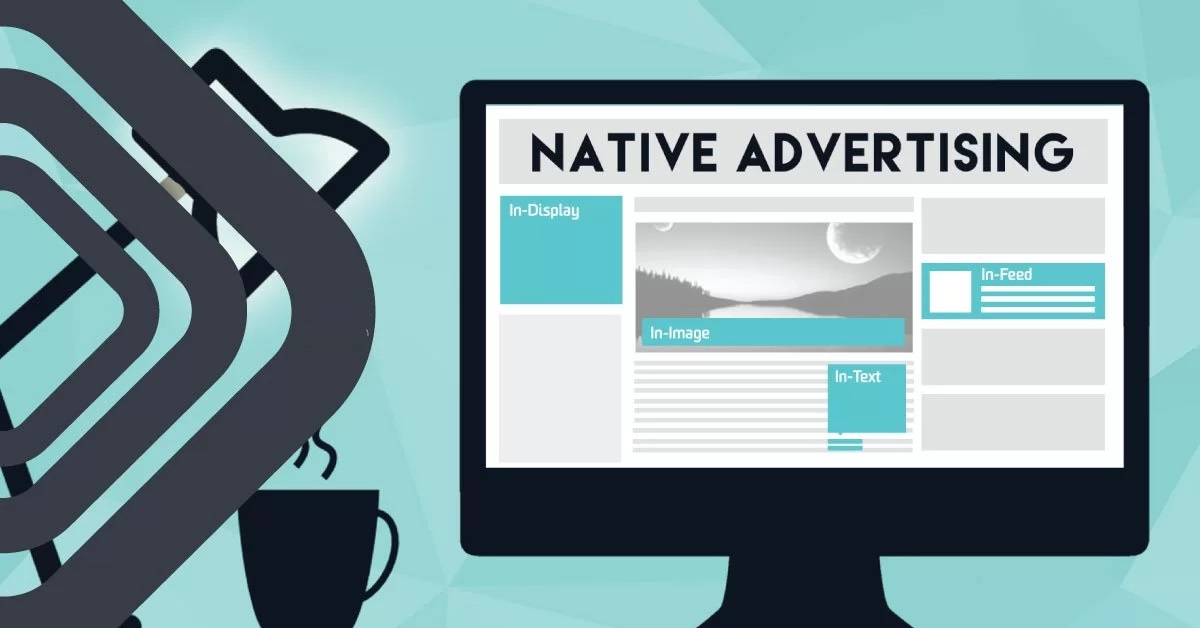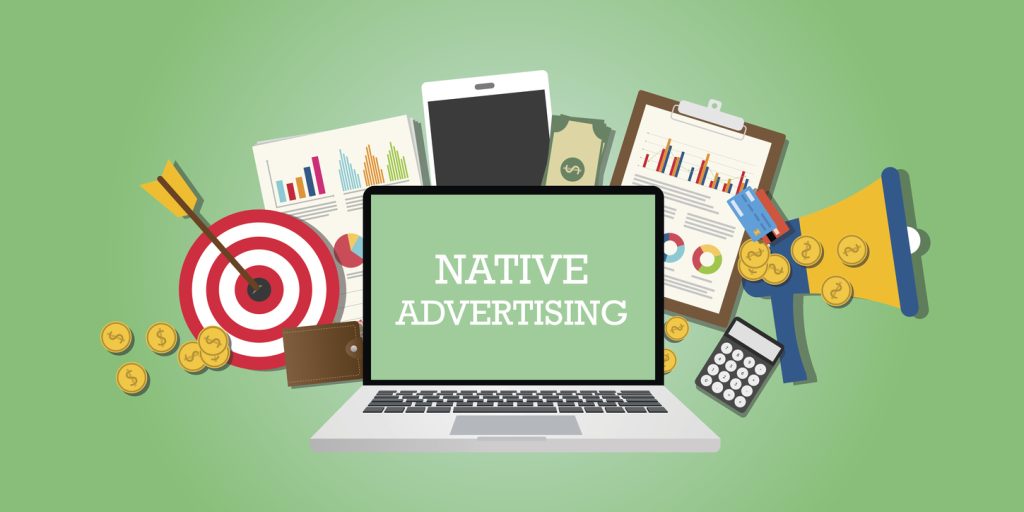During these last years, we have witnessed the growing trend of companies to use native advertising in their digital marketing strategies. Thanks to its rapid evolution and the multiple benefits it presents compared to more traditional online advertising, more and more professionals are betting on improving their results through this strategy.

What is native advertising?
We can define native advertising as an advertising technique that consists of including promoted content within an online medium, respecting the format and style of the media where it is published.
In other words, unlike traditional online advertising, native advertising allows us to capture the attention of users without them hardly noticing it, so that we can give our brand greater visibility and generate engagement in a less intrusive and more natural way.
What types of native advertising exist?
We can classify native advertising in this two main ways:
Closed native ads: this is advertising that is published within the limits and requirements of a given platform, such as Facebook or Twitter, thus limiting its reach.
Open native ads: in this case, it is the brand itself that advertises its content through any platform that allows native ads to be added. As we will see later, there are platforms that allow us to spread our content on several websites, with the same theme and at the same time.
Within these two types, we can distinguish between multiple ad formats. These are the most used:
Paid Search Ads: Ads embedded in results from Google, Bing, Yahoo, etc.
In-feed advertisements on social networks: sponsored links on Facebook, Twitter, etc.
Ads integrated in the content: ads integrated within the editorial where it is published.
Recommended Widgets: Content that is recommended based on the content the user is reading.
Promotional listings: promotion of various products related to your search on Amazon, Google, etc.

Why should you use native advertising?
The advantages provided by native advertising are many and very powerful, and benefit both the final consumer and the brands and media where it is published. Therefore, the great success they are having is not surprising. Of all the possible benefits, these are the ones that seem most important to us:
- Offers a better user experience, fighting fatigue and rejection of many users to conventional advertising. For ethical reasons, it is necessary to show that it is promoted content, but we will ensure that users do not perceive it as intrusive by adapting it to the editorial medium in which the promotion is published. This means users will perceive the promotion as valuable content and will respond to it in a much more positive way.
- Allows us to reach the audience in a more fluid and less intrusive manner. Unlike traditional advertising, where the audience is often interrupted with content that they have not chosen to watch or consume, native advertising allows us to offer an active position to the user, showing valuable content related to their current search.
- It is more effective and generates greater engagement. According to recent studies, being more personalized than traditional advertising, native advertising can achieve 53% more views than graphic ads and increase purchase intention by up to 18%.
- It allows you to evade ad blockers in a highly saturated advertising market, where more and more users are installing them to avoid negative browsing experiences and wasting their time.
Tips for effective native advertising
- Non-intrusive content
This is not about promoting your brand, but about attacking the top of the funnel (TOFU) with quality content that educates the user or helps them discover a problem (issue) that you can solve.
- Offer useful content and leave them wanting more
To ensure a good user experience, it is necessary to direct them to a page with content when they click on native ads.
Since our goal is that they leave us their data so that they can advance in the funnel, offer them useful but incomplete content to leave them wanting to know more. Offer them valuable information, but don’t forget to ask them for their email so they can discover the rest of the package you have for them.
- Identify and define your potential customers
This is a crucial step for your campaigns to be effective. It is important to know your target audience, not only to segment campaigns correctly, but also to be able to create the right message and guide it to solve the specific problems and needs of your target audience.
At this point, you will also have to identify what media or channels your potential customer uses to consume information and how. For example, a teenager consumes information more visually and quickly, using platforms such as Instagram and Twitter.
Instead, a small business manager tends to consult more technical information, such as economic data or current news on other types of platforms, such as LinkedIn or economic blogs.
Native advertising tools
It is a fact that if you need your native advertising strategy to reach as many users as possible, you have to focus strategy on open native ads to be able to promote the same content on various platforms or websites with the same theme. To better position your native ads and achieve greater effectiveness of your campaigns, I recommend using one of the following tools:
It has a predictive algorithm for content recommendations that analyzes the online behavior of users so that advertisers can directly target the most relevant audiences.
It is one of the most important content platforms on the market today, noted for offering the best average page views per user with the lowest bounce rate, which is known as CTR.
Application that combines content analysis, monitoring and control with the aim of achieving significant connections with the audience.
Conclusion
It is not surprising that the use of native advertising is on the rise, considering its great potential to reach users in a smooth, non-intrusive way that generates a lot of engagement.
My advice to get the most out of this type of campaign and achieve the expected objectives is, above all, to spend all the time it takes to identify your potential customer audience very well, find out their needs and problems, and try to solve them with quality content.
Of course, all this previous work will be of little use if you do not carry out a good analysis of the possible digital media where to place your ads and select the ones that best suit your proposals and your ideal audience, generating a lot of impact and maximum visibility. For this there are specialized platforms, which will be tremendously useful. Do not hesitate to use any: your ads will be better positioned and your campaigns will be more effective.







